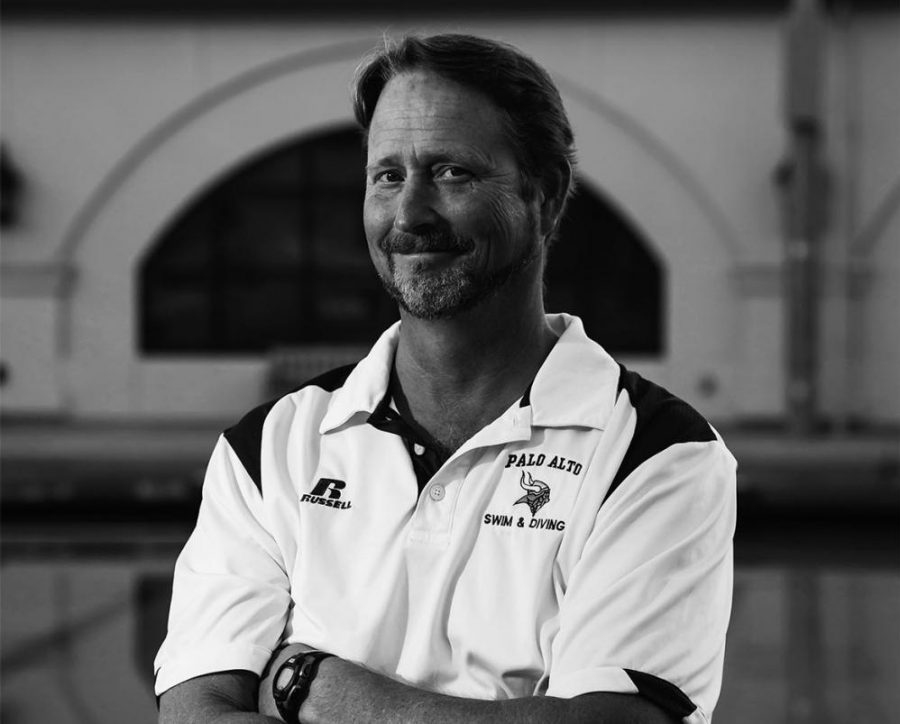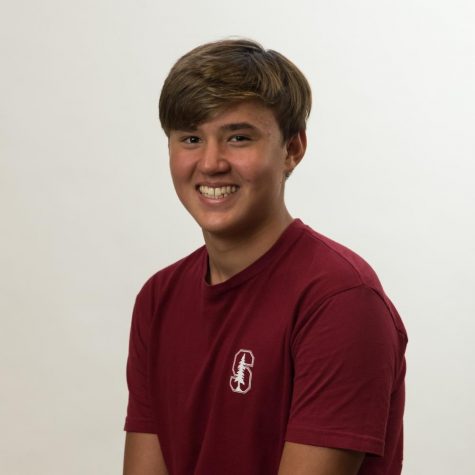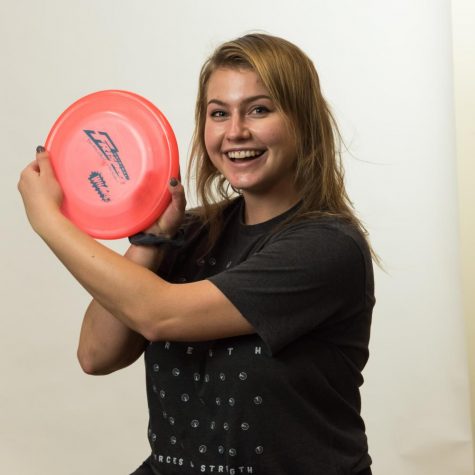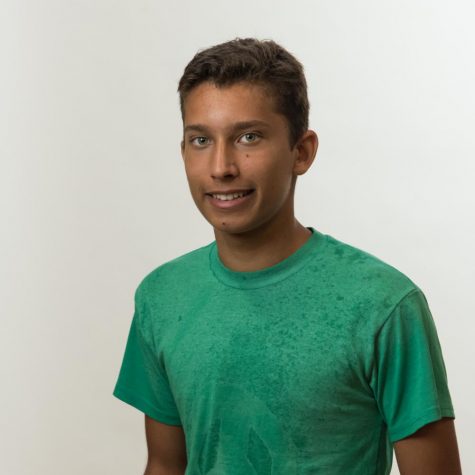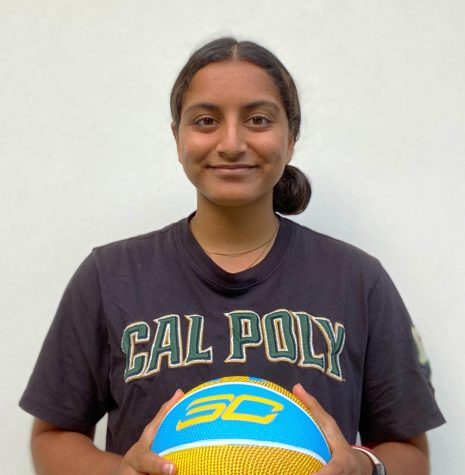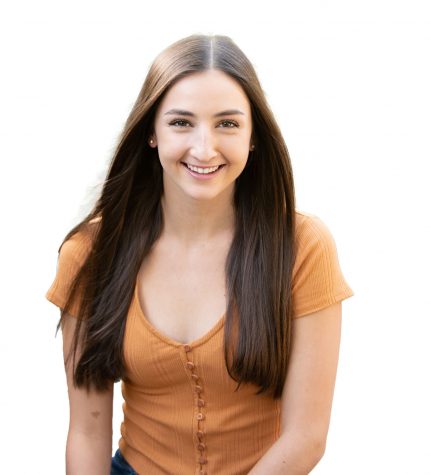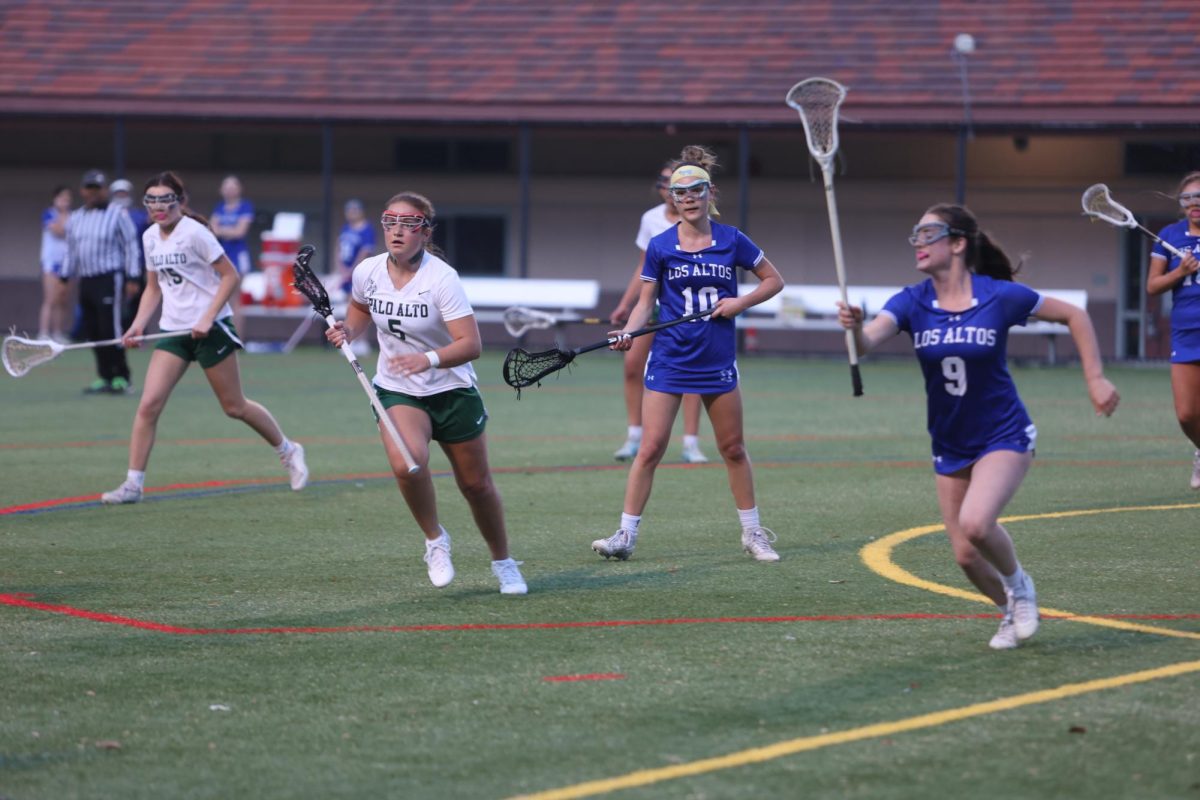Dye Hard
With 16 years as the Palo Alto High School swim team coach, Danny Dye has become a familiar sight on the pool deck. Countless students have benefited from Dye’s hard work, some without even knowing it. His reach is felt from the immense effort he has put into the team and into helping players achieve their full potential, but extends past just Paly Swimmers. Whether it is working with his youth group, teaching P.E., or keeping score for football games, Dye gives back to the community he loves. This is his story.
November 14, 2019
Great spikes of pool water rise into the air as the energetic hands of the Palo Alto High School Swim team catapult their beloved coach, Danny Dye, into the home waters of their pool. The buzz of celebration is not without cause- it’s Dye’s 200th win at Paly. But the exuberant support of his swimmers honors more than just the win. It represents a deep-rooted appreciation for a coach who has dedicated countless hours and immeasurable effort over 16 years to the betterment of the students who are lucky enough to know him.
During his time at Paly, Dye has garnered a reputation of being a passionate and enthusiastic coach. In fact, enthusiastic may be an understatement. Every athlete has vivid memories of Dye running around on the deck, pointing exaggeratingly at his timer, and gesticulating wildly to encourage his kids to give everything they have.
Coach Dye’s intensity has translated to countless wins and league titles. Dye has received two honors coaching awards for CCS and a California State Coaches Award for girls swimming.
Since Dye started coaching at Paly, the girls team has won three CCS titles and the girls and boys teams have combined for 11 runner-up CCS titles and 24 league titles. He has dedicated many years to improving the Palo Alto swimming and diving teams, as well as coaching the sport throughout his entire adult life.
But how did he start on this life-long aquatic journey? At just four years old, a young Dye found himself in a life or death situation: a family pool outing took a turn when Dye fell into the water and, unable to swim, almost drowned. Thankfully, he was saved and, unlike many who confront such terrifying circumstances, got right back in the water – this time with the conviction to master it. Dye’s family enrolled him in swim classes so that he would not chance another experience similar to this one.
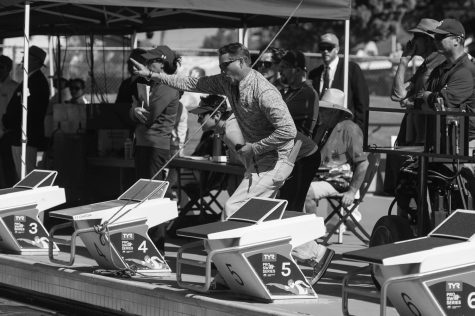
Little did they know that Dye’s life would soon revolve around the sport that he was exposed to on accident. Dye’s love for swimming grew as he did, and he began to see it as more than just a sport and created a deep passion for his job.
“The fact that it is you against water, which is considered the most powerful force on earth and just that challenge,” Dye said.
After swimming throughout his childhood years, Dye attended Bakersfield Junior College and swam for the team there. Then, Dye transferred to Coe College in Iowa and continued his swimming career.
But after his four years of collegiate eligibility came to an end, Dye was lost: how could he leave the sport he loved and had dedicated so much time to? Thus, he started to volunteer as a coach for his past team. He was prepared for this experience by his years acting in a similar role while he was still swimming on the team, remarking that the athletes basically coached themselves.
After his experiences in Iowa, Dye decided to coach diving at the University of Wisconsin Whitewater. In search of another new experience, Dye came to California to coach at Los Altos. He stayed at Los Altos for eight years, then switched to Paly, where he found a home. Even though he received other offers throughout the years, “it never felt right to leave,” Dye said.
His early days of coaching were stressful for Dye: when he first arrived at Paly, many swimmers on the team did not have the same passion for swimming that Dye immediately brought to the pool deck. The serious reputation of today’s swim team had not yet been established. Many swimmers viewed the sport more as conditioning than as an artform to be perfected.
However, Dye’s investment to the team did not stop at the pool. His older swimmers recall how he spent sleepless nights calculating the points and times the swimmers would need to win the upcoming meets. He often says that he can’t sleep until he has checked – even double checked – his math.
This behavior is a norm for Dye who routinely jokes about his ADHD, making it a part of his personality. His disorder causes him to develop a near obsession with his coaching like making calculations so often.
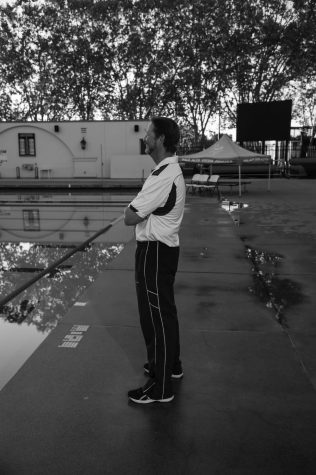 Due to his labors, Dye had high hopes for his early teams, only to be disregarded by his swimmers, who did not see the team in the same light. Dye, seeing that his swimmers lacked the motivation and belief that he needed from them to keep their championship hopes alive, tried to instill a culture of hard work and high attendance by appealing to the team’s emotions to get his swimmers invested in their performance.
Due to his labors, Dye had high hopes for his early teams, only to be disregarded by his swimmers, who did not see the team in the same light. Dye, seeing that his swimmers lacked the motivation and belief that he needed from them to keep their championship hopes alive, tried to instill a culture of hard work and high attendance by appealing to the team’s emotions to get his swimmers invested in their performance.
Despite his good intentions, many students did not receive Dye’s intense emotion and difficult swim sets as he would have hoped. Instead, they began to see him in a negative manner and thus, the legend of “Death by Danny Dye” was created. This alliteration served to describe the intense workouts that Dye would subject his swimmers to, a phrase that gained notoriety while former student Evan Nagesh (‘17) was swimming for Paly.
Dye was known to not only be intense with his workouts, but intense outside of the pool. Nagesh had been swimming competitively for local powerhouse club team Palo Alto Stanford Aquatics prior to his freshman year. He met his future coach for the first time at a club swim meet in November, a full 2 months before the school swim season started.
“He was just there watching the athletes who were going to be swimming for him in the high school season,” Nagesh said. “I was really impressed with his dedication as a coach for coming out during the offseason on his own time to see how his players were developing in the offseason, to see the new players in the spring and to scope out the competition.”
Nagesh, like most other swimmers under Dye, were quick to notice his intense focus on the sport and on winning CCS every year, a lofty goal for any public school when competing with private swimming powerhouse schools like Bellarmine. Dye, with his habit of calculating the exact times needed to win before the season starts, has a reputation for pushing his swimmers to strive for the highest level of excellence.
“He expected a lot from me from the very beginning,” Nagesh said. “After the first few days of practice, he sat me down and told me I could accomplish x, y and z by the end of the season. I was surprised by how quickly and how assertively he had set his ambitions for me.”
Although Nagesh knew Dye was a P.E. coach and an avid Iowa fan, he found that it was difficult to talk to Dye about his life outside of swimming, especially during his first years of high school, before Dye had “mellowed out”.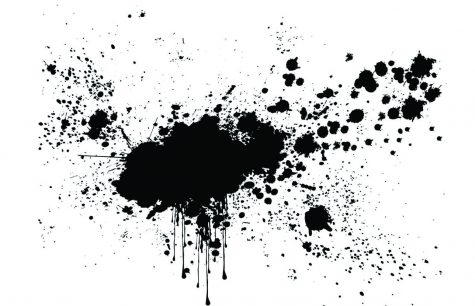
“Even if our conversations would try to stray away from swimming, they would inevitably come right back to it,” Nagesh said.
Despite, or perhaps because of Dye’s intense workouts and intensity towards his swimmer, Nagesh and Paly enjoyed a lot of competitive success. Although there were ups and downs throughout the years, overall, the Paly team has historically been very successful. Dye has taken on the mantle of continuing this legacy of success for the team and his athletes.
“To be able to add to what other coaches have accomplished here, it humbles you,” Dye said.
Although the Paly program has been extremely successful under Dye’s coaching, he credits his athletes for their team achievements.
“I look at the accomplishments the team has and I do not consider them my accomplishments,” Dye said.
Even with all of his success as a high school swim coach, Dye wants his athletes to feel supported and motivated to accomplish their swimming dreams. Dye knows the pressures that student athletes are under and he wants every athlete to know that they belong on this team.
“I think it always comes down to empowering the student-athlete and making them feel like they have these abilities and gifts,” Dye said.
Dye’s greatest joy in coaching is seeing the growth of his swimmers and what they are able to accomplish over the years. Seeing his swimmers reach goals they thought were unreachable brings joy to Dye’s coaching experience.
Dye makes sure that his personality shines through with his coaching style. Even with all the hard core training, Dye strives to connect with his athletes on a personal and professional level. Dye is all about being himself and making sure that this athletes see him for who he is.
“I just bring Danny Dye,” Dye said.
The sport of swimming has changed over the years in terms of training and technique, and Dye also has adjusted his coaching style to match how swimming is evolving. He admits that he was an aggressive coach with an extreme coaching philosophy in his earlier years, but has gradually adapted to modern swimming.
“Just in the last four or five years I’ve really placed it on the athletes rather than me feeling like I have to do all the work for the athletes,” Dye said.
Notably, he has allowed more swimmer led practices and individual practices, where instead of quarterbacking the training, the swimmers are now held accountable by their teammates and not as much by Dye himself. He believes that you have to “empower the athletes to realize they have the answers.”
When asked how such a drastic switch in coaching philosophy came about, Dye paused. He recalled that he started the switch a little after the passing of his nephew. Dye emerged from this seeing importance in emphasizing growth, support, and community. He began to see the role of coach to be more of a supporter and mentor.
“I’ve mellowed,” Dye said, now placing more emphasis on building his swimmers up not only as athletes, but as people too. He also brings authenticity to the deck: “It is important that athletes see you for who you are.”
Unsurprisingly, as a philosophy major, Dye is very intentional about his method of coaching. He relates his coaching philosophy back to that of the Ancient Greeks; they believed that the purpose of life is to improve society and those within that society, which in turn leads to your own internal improvement. Seeing the countless athletes changed by Dye’s aid, there’s no question to the effectiveness of his coaching beliefs.
“It’s all about the growth of a young person,” Dye said.
His interest in philosophy exceeds coaching, however, as it leads to his work as a youth group leader and volunteer pastor for his church.
“I’ve always been more philosophical than religious,” Dye said.
Early in life, Dye suffered the passing of his brother. Struck by this tragedy, Dye turned to a youth group who supported him through it. Here started a lifelong relationship with the church as he has “always been involved with the ministry.”
Dye started to preach to help his local preacher out by balancing his schedule and has been preaching for about seven years. He helps out with the youth group and at spiritual growth events.
Dye goes down to Mexico every summer with his youth group to help build houses.
“It’s the best week of the year,” Dye said. He describes it as rejuvenating and serene. He loves being around children that are so dedicated to service that they give up a full week of summer for the greater good.
When it comes to his typical daily routine, Dye defines it as “open wire in a rainstorm,” because he finds himself going everywhere. He starts off the morning by coming to Paly to coach the varsity team at 7 am. He then heads off to teach elementary P.E. in the Cupertino District and attend to his duties at his church. Finally, he heads back to Paly for his teams’ practices or meets, and manages to be home for dinner at around 7 pm. Even with his busy schedule of back to back (to back to back) jobs, Dye wouldn’t trade any of it for the world.
“I wouldn’t want to do anything else,” Dye said. “It helps me, as a person, to be more balanced.”
Outside of coaching, teaching, and preaching, Dye enjoys playing golf, working out, and reading. Although Dye has many other obligations outside of Paly, he has formed a community therethrough forming relationships with other staff and students.
Stacey Koffman, current P.E. teacher at Paly, has known Dye since he came to Paly 15 years ago. Back then, both of them had different jobs. Koffman was the head athletic trainer and a teacher, while Dye was a P.E. substitute still trying to find a full time job. Over the years, Koffman and Dye have learned from each other and have grown together as people.
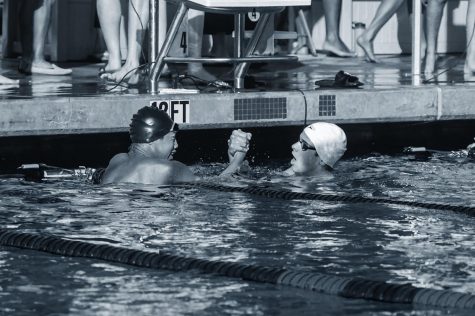
“He’s one of the coaches that I still have a good relationship with,” Koffman said.
Whether it is in the classroom or on the deck, patience is the most important skill they have both learned. Koffman recognizes his desire to watch the kids improve and pushing them to reach limits they never thought they could.
“He is very passionate about what he does with the kids that he works with,” Koffman said.
Dye’s passion is evident to Chesnie Cheung (‘20), who started swimming with Dye her freshman year of high school. Cheung has witnessed Dye’s change of pace throughout the years and is excited for what is to come during her senior season as swim team captain.
Cheung credits Dye for being an understanding coach who reaches out to his athletes and cares about their well being.
“I think that he is one of the best all-around people,” Cheung said.
Although Dye has many years of experience with athletes and students, he acknowledges that everybody makes mistakes and his coaching career is no perfect fairytale. Dye strives to learn from his mistakes and continue working to improve his life and career.
“If each day and season I can learn and grow from my own shortcomings, then hopefully that makes me a better teacher and coach for the athletes,” Dye said.
Dye’s influence on his athletes has left him with a legacy that will always be remembered in Paly history.
“I hope they are pushing him into the pool every season,” Nagesh said.



